Real-time sports coverage: modern tools for sports newsrooms
 Aleksandra Kozioł
Aleksandra Kozioł Victoria Moodie
Victoria Moodie © by Jay Brand from Pexels via Canva Pro
© by Jay Brand from Pexels via Canva ProLike it or not, sports matter. Sports fans and supporters make up a large chunk of the population – and of media audiences. That’s why sports coverage is a crucial part of news cycles – from worldwide events to local teams.
An example? The Men’s FIFA World Cup is by far the most-watched sporting event in the world. It’s estimated that five billion people tuned in during the 2022 edition in Qatar, with 1.5 billion watching the final between France and Argentina.
Watching the game is just a part of the experience. The rest is about keeping the audience informed, engaged, and entertained – before, during, and after the sports event they wish to follow. In this article, we’ll discuss the tools any newsroom can use to deliver the best sports coverage.
What do the sports fans want?
And we’re off! To build great coverage, we first need a basic understanding of sports fans’ engagement patterns, expectations, and habits. The first thing that stands out is that they embrace an omnichannel approach – their media diet includes everything from traditional TV and print to social media and modern streaming platforms. With the advent of a dual-screening approach, audiences use multiple sources simultaneously and get the most out of each.
Sports fans engage with content across three key phases:
Pre-game: Checking betting odds, reading game previews, setting fantasy lineups, and engaging in predictive discussions.
In-game: "Second-screening," live tweeting/commenting, checking live scores & stats, watching replays, following live blogs for commentary and interactive features, tracking fantasy teams, and live betting.
Post-game: Watching highlights and recaps, reading post-game analysis, and participating in fan forums, catching up by reading live blogs for play-by-plays and editorial insights.
Engagement in action: Paris 2024 Olympic Games
We’ve seen these engagement dynamics play out in recent global events, namely the Olympic Games in Paris 2024.
At PushPushGo, we observed:
11% more push campaigns sent
53.6% increase in clicks and site visits
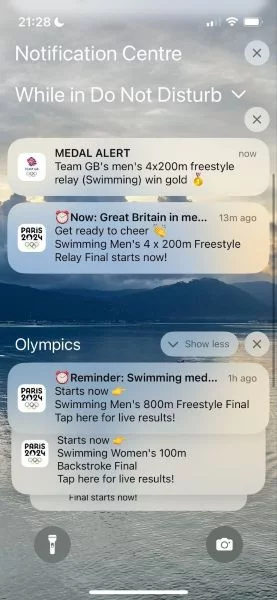
Alongside increased push notification activity, other forms of real-time coverage also drove strong engagement, particularly live blogging. One of Tickaroo’s clients, a leading German national publisher, exemplified this approach. Their coverage reached more than 3 million unique users and generated 5 million views, showing the power of live, audience-driven content.
The newsroom kept readers deeply engaged by using interactive features such as quizzes and polls that drew over 2,000 responses, while eight reporters collaborated live, sharing more than 1,400 images and videos. The result was a truly immersive experience that captured both the energy of the event and the enthusiasm of its audience.
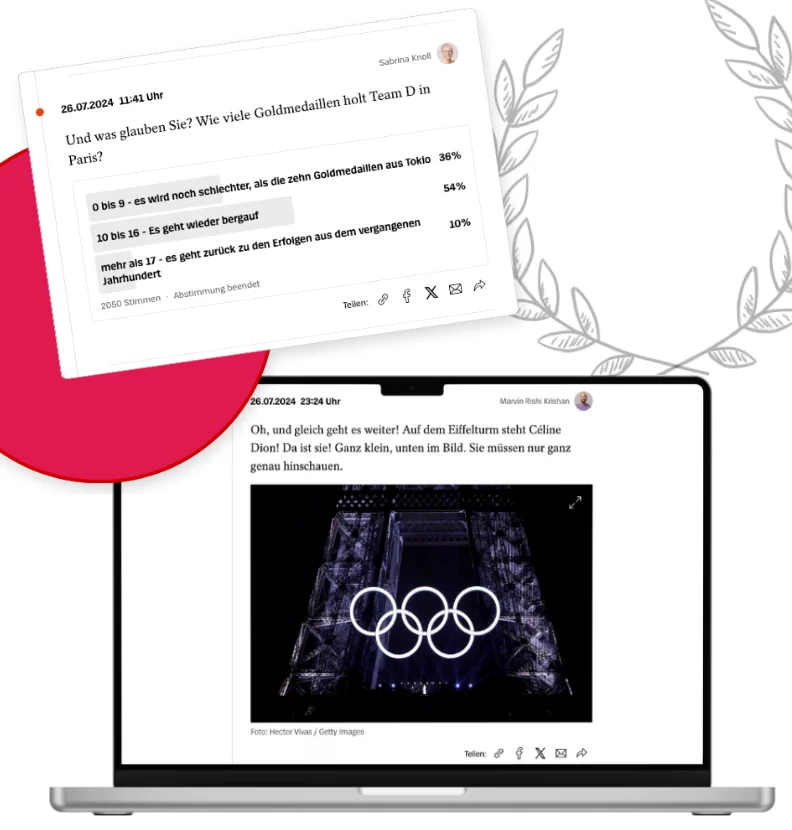
Building the buzz: engaging audiences before the game starts
For publishers, pre-game communication is the first step in building momentum and ensuring readers know where to follow the live coverage. By combining push notifications, WhatsApp channels, and live blogging, newsrooms can build anticipation and guide audiences directly to their platforms before kickoff – creating momentum that carries into live coverage.
Push notifications help distribute content directly to subscribers, while live blogs create a central hub for updates, predictions, and fan interaction – all contributing to stronger audience retention once the game begins.
Growing your subscriber base with push notifications and WhatsApp channels
To impress the audience with exquisite live coverage during the game, you need to make sure they know where to find it. This is where subscriptions come in handy. Depending on your platform, you can choose between:
Web push or browser notifications: for website visitors.
Mobile push: for app users.
WhatsApp channels: for WhatsApp users.

How to increase the number of push (and WhatsApp) subscribers?
Use native subscription forms (web push).
Trigger pop-ups that encourage users to pin the site to their home screen (key for enabling web push notifications on iOS).
For users with notifications blocked, display instructional pop-ups that show how to enable notifications blocked by the Google Chrome browser.
Add a sign-up form on every page (web push).
Enable toggle switch (web push).
Enable bell widget (web push).
Use pop-ups to promote WhatsApp channels.
Promote push subscription sign-ups in live blogs, which have ample room for advertisements and monetising content.
Clearly explain the benefits of subscribing.
Once you get them on board, you can make your communication more personalized.
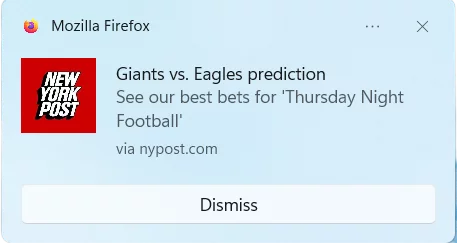
To do so, enable targeting options like:
Notification preferences allowing subscribers to hand-pick their preferred topics.
Track subscribers’ interests.
Create themed WhatsApp channels.

Using live blogs to reach and excite your audience before kickoff
A great way to reach audiences before a match even begins is to set up the live blog in advance. With Tickaroo, journalists can start reporting earlier, building anticipation and giving readers a reason to tune in ahead of kickoff. Pre-game coverage also helps to reach new audiences through more diversified content, from betting odds and lineup predictions to fantasy picks and fan discussions.
Journalists can add depth and emotion to this stage by sharing behind-the-scenes content that captures the pre-game atmosphere like team arrivals, warm-ups, and the excitement in the stands. It’s all about connecting with fans and engaging them before the first whistle blows.
Keeping fans engaged during the game
Once the game kicks off, every moment counts. The goal becomes maintaining momentum – keeping audiences updated, excited, and coming back for more. Real-time tools like push notifications and live blogs allow publishers to react instantly to what’s happening on the field, delivering key updates the moment they occur and turning fast reporting into deeper engagement.
Delivering key moments with push notifications
Once your audience is subscribed and the games launch, you can keep them engaged, or at least informed, with easy push notification options.
Multi Push helps you share the updates across multiple projects (e.g., you can send information about a goal scored not only to your sports subscribers but also to those who subscribed to the main portal)
Rocket Push for key moments – you don’t have to enter the PushPushGo application, instead sending the notification directly from the updated article page.
Live push campaign is a new feature being developed with sports coverage in mind:
For real-time event updates, including live blogs.
Start with one message, then send updates within the same campaign.
New entries replace unseen ones – no notification overload.
Always shows the latest info to the user.
Offers real-time coverage and a clean user experience, perfect for live events.
Push automation with custom triggers
Custom triggers offer flexibility to send push notifications based on specific actions or events that are relevant to your audience. For example, a live blog update can trigger an automatic notification, alerting subscribers about new developments.
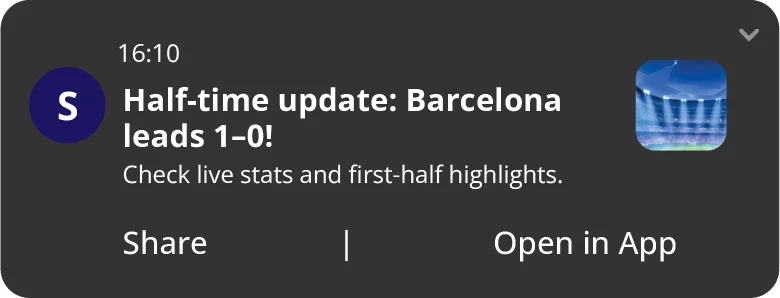
Connecting with audiences in real time through live blogs
Once the match begins, opportunities to engage audiences in real time are limitless. One key advantage of using a live blog for coverage is visibility: Google continues to prioritise live events with the “Live” badge, giving publishers valuable reach during matches. Publishing early helps secure indexing so that the blog appears right when fans start searching. On owned platforms, adding homepage teaser widgets, a scoreboard, and strategically timed push notifications can further funnel readers directly to the live experience. Pushes sent at key game moments, such as goals, halftime, or major highlights, bring fans back in real time, ensuring they never miss a beat and strengthening the connection between the newsroom and audience.
When it comes to the content itself, presenting information in a way that’s structured and easy to consume is essential. Using specialised sports templates provides a clear foundation for storytelling, while additional interactive features make the experience truly dynamic. These can include:
Player cards and live highlights
Celebration videos and fan photos
Player reactions and behind-the-scenes moments
Fan participation through integrations such as Contribly
Reactions and integrated polls
Real-time data feeds delivering scores, stats, and match events from trusted providers like Heimspiel and Stats Perform
With scalable live blog software capable of handling over 1.6 million requests per minute, journalists can focus on what they do best: storytelling. And with an effective push strategy, new readers can find their way to the live coverage effortlessly.

Monetising fan attention during and after the game using live blogs
Focusing on connection and engagement doesn’t just strengthen audience relationships, it directly enhances a newsroom’s ability to monetise live coverage. There are many ways to turn key moments into valuable revenue opportunities, both during and after the game.
During the game:
Use dynamic ad creatives triggered by in-game events.
Turn local sports coverage into a subscription driver with content fans can’t find anywhere else.
Embed sponsorships naturally within storytelling to add value.
Engage fans interactively, ensuring your live blog becomes a can’t-miss resource.
After the game:
The creative use of live blog features allows newsrooms to build on momentum and extend engagement beyond the final whistle. For example, Stuff’s All Blacks Roster live blog generated more than 150 comments, while a post-game “Man of the Match” poll received over 350 responses. Match summaries that are generated with AI support help to create more easily digestible overviews. These forms of interaction keep fans on-site longer, drive ad revenue, and open the door to cross-promoting other stories and live experiences.
In the end, combining great storytelling with the right tools turns every stage of coverage before, during, and after the game into an opportunity to connect with readers, engage them deeply, and monetise their enthusiasm.

Key takeaways
Live blogs and push notifications keep sports fans entertained and well-informed at any stage. And the main job of sports newsrooms is to use those tools in the most effective manner. From real-time notifications to live blogging, tools like PushPushGo and Tickaroo help publishers deliver dynamic, multi-channel coverage that keeps fans connected at every stage.
Pre-game: Reach new audiences by starting coverage early, build databases and segments for personalized engagement.
In-game: Interact with fans and monetize their attention through live updates, multi-channel campaigns, key-moment notifications, and engaging features like polls and quizzes.
Post-game: Promote your other content to keep fans on your site longer – focus on regular communication, retention, and cross-channel promotion.
Want to learn more?
Discover practical examples and insights from experts in our webinar “Real-time sports coverage: modern tools for sports newsrooms”, co-hosted with Tickaroo. Watch it here →https://pushpushgo.com/en/resources/webinars/real-time-sports-coverage-modern-tools-for-sports-newsrooms

Content Specialist @PushPushGo
Editor and writer. She is interested in media and new technologies.

Marketing Manager @Tickaroo
As a Marketing Manager at Tickaroo, Victoria helps publishers grow and engage their audiences with intuitive live blog technology. Known for her creative, hands-on approach, she delivers compelling content and strengthens impactful partnerships.
Try PushPushGo to engage and connect with your audience.
Create an account and start testing!
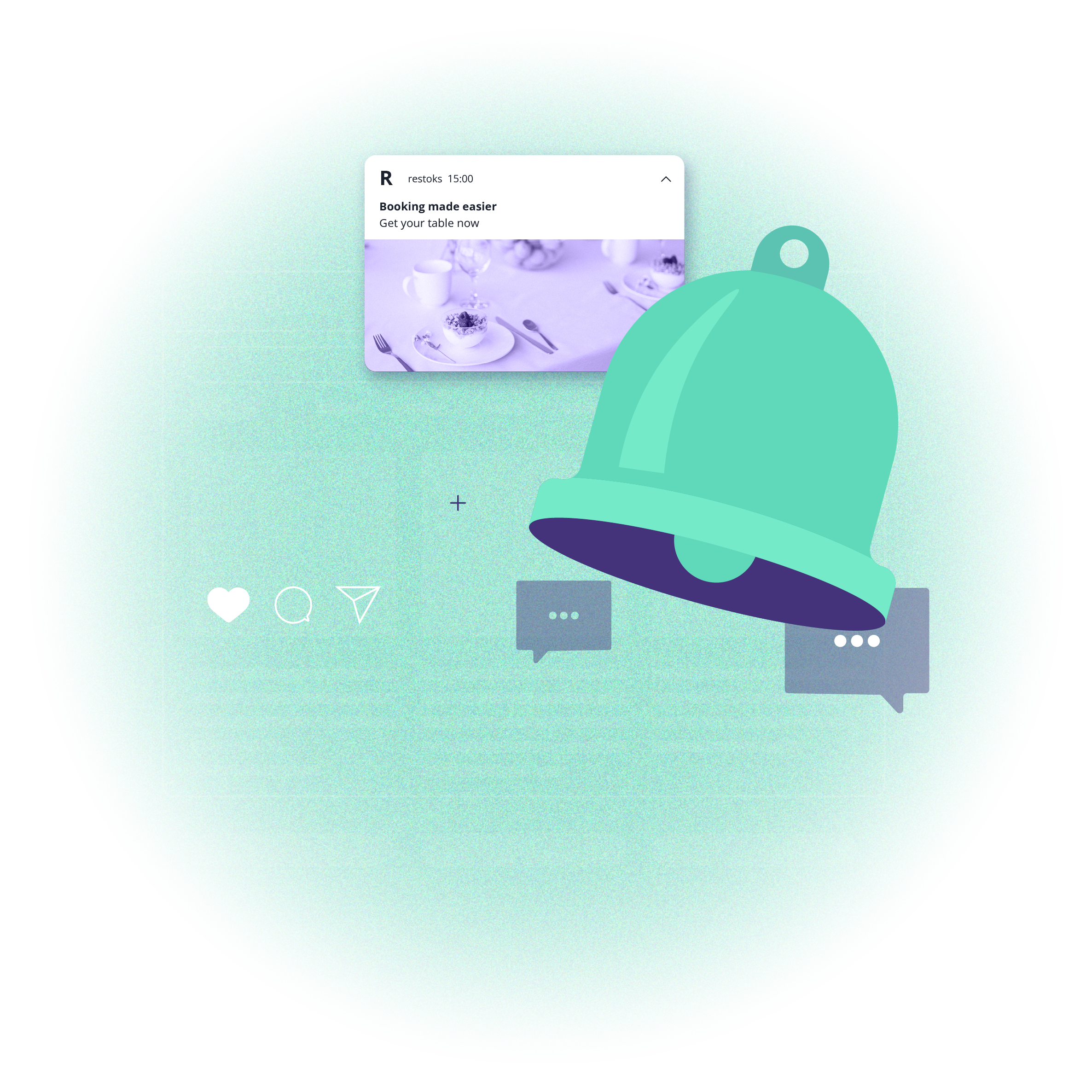
-t7ofpvw3t7.webp)



